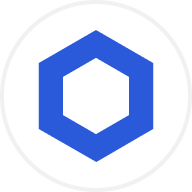UMA Price Explained: How UMA Powers DeFi with Synthetic Assets and Oracle Solutions
What is UMA? An Overview of the Protocol
Universal Market Access (UMA) is a decentralized finance (DeFi) protocol built on the Ethereum blockchain. It empowers developers to create synthetic assets and financial derivatives, enabling users to gain exposure to real-world assets without directly owning them. By eliminating traditional barriers to entry, UMA democratizes financial markets and fosters global accessibility.
At its core, UMA provides tools for designing synthetic tokens that represent commodities, securities, or event outcomes. These tokens are over-collateralized to mitigate the volatility inherent in cryptocurrency markets, ensuring stability and security.
How UMA’s Optimistic Oracle System Works
UMA’s Optimistic Oracle system is a groundbreaking innovation that resolves disputes and verifies off-chain data on-chain. Unlike traditional oracles, UMA’s system operates on the assumption that most participants act honestly. Disputes are rare but are resolved through the Data Verification Mechanism (DVM), ensuring data integrity.
This system is particularly beneficial for applications requiring real-world data, such as:
Prediction markets
Insurance contracts
Synthetic assets
By minimizing the need for constant on-chain verification, UMA reduces costs and enhances scalability, making it a preferred choice for developers.
The Process of Creating Synthetic Assets on UMA
Synthetic assets are central to UMA’s functionality. These assets are created through smart contracts that require users to lock up collateral, ensuring stability even in volatile market conditions.
Steps to Create Synthetic Assets:
Define the Asset: Developers specify parameters such as price feeds and expiration dates.
Lock Collateral: Users deposit collateral into a smart contract to mint synthetic tokens.
Monitor and Settle: The Optimistic Oracle monitors asset performance, resolving disputes through the DVM if necessary.
This mechanism supports a diverse range of synthetic assets, including tokenized commodities and event-based derivatives, expanding UMA’s use cases.
Governance and the Role of the UMA Token
The UMA token is integral to the protocol’s governance and functionality. Token holders participate in decentralized governance by voting on:
Protocol upgrades
Parameter changes
Dispute resolutions
Additionally, UMA tokens secure smart contracts and maintain the Optimistic Oracle system’s integrity. Inflationary rewards (0.05% of the total supply) incentivize participation in collateralization and governance activities, fostering community engagement.
Institutional Partnerships and Real-World Adoption
UMA has established strategic partnerships with institutions like Polymarket and SoFi Bank, showcasing its potential to bridge traditional finance and DeFi. These collaborations highlight UMA’s versatility and real-world applicability.
Example Use Case:
Polymarket Integration: UMA’s Optimistic Oracle powers prediction markets, ensuring accurate data resolution.
Such partnerships underscore UMA’s ability to drive innovation and adoption in decentralized finance.
Recent Protocol Upgrades and Scalability Improvements
UMA has implemented several upgrades to enhance functionality and scalability:
Staking Incentive Stabilization: Adjustments to staking rewards encourage long-term participation.
Improved Synthetic Asset Mechanics: Spam disputes reduced by 40%, improving system efficiency.
EVM-Compatible Chain Expansion: Integration with chains like Polygon and Avalanche boosts scalability and adoption.
These upgrades position UMA as a robust solution in the evolving DeFi ecosystem.
Factors Influencing UMA Price
The price of UMA tokens is influenced by multiple factors:
dApp Integrations: Increased adoption of UMA-powered applications drives token demand.
Market Sentiment: UMA’s price fluctuates with broader cryptocurrency market trends.
Protocol Upgrades: Enhancements often lead to increased interest and utility, positively impacting token value.
Recent price surges have been tied to institutional adoption and strategic partnerships, reflecting UMA’s growing prominence.
Competitive Landscape: UMA vs. Other Oracle Solutions
UMA operates in a competitive space alongside decentralized oracle solutions like Chainlink. While Chainlink focuses on reliable data feeds, UMA differentiates itself with:
Optimistic Oracle System
Synthetic Asset Capabilities
These unique features enable UMA to cater to niche use cases, such as prediction markets and event-based derivatives, setting it apart from competitors.
Risks and Challenges
Despite its innovations, UMA faces several challenges:
Reliance on Ethereum: UMA’s performance depends on Ethereum’s scalability and upgrades.
Market Volatility: DeFi market fluctuations can impact UMA’s adoption and token price.
Competition: The growing number of oracle solutions and synthetic asset platforms necessitates differentiation.
Addressing these challenges will be crucial for UMA’s long-term success.
Long-Term Growth Drivers for UMA
UMA’s growth is likely to be driven by:
Ethereum-Based Smart Contracts: As Ethereum evolves, UMA benefits from improved scalability and lower transaction costs.
Strategic Partnerships: Collaborations with institutions and dApps expand UMA’s reach and utility.
DeFi Market Expansion: The overall growth of the DeFi sector creates more opportunities for UMA’s adoption.
While short-term volatility persists, UMA’s innovative approach positions it as a key player in the DeFi ecosystem.
Conclusion
UMA is a pioneering protocol that combines synthetic asset creation with a unique Optimistic Oracle system. Its focus on accessibility, scalability, and real-world adoption makes it a valuable asset in the DeFi space. As UMA continues to evolve and expand, it is poised to shape the future of decentralized finance.
© 2025 OKX. Tento článek může být reprodukován nebo šířen jako celek, případně mohou být použity výňatky tohoto článku nepřekračující 100 slov za předpokladu, že se jedná o nekomerční použití. U každé reprodukce či distribuce celého článku musí být viditelně uvedeno: „Tento článek je © 2025 OKX a je použit na základě poskytnutého oprávnění.“ U povolených výňatků musí být uveden název článku a zdroj, a to např. takto: „Název článku, [místo pro jméno autora, je-li k dispozici], © 2025 OKX.” Část obsahu může být generována nástroji umělé inteligence (AI) nebo s jejich asistencí. Z tohoto článku nesmí být vytvářena odvozená díla ani nesmí být používán jiným způsobem.



